




Shipping a car across the country is not a task that has to be difficult or break the bank. If you're on a tight budget and looking to trim down the shipping costs, there are a couple of car shipping options that can save money. These will be described from cheapest to most expensive.
The cheapest way to ship a car cross country is using open auto transport terminal to terminal car shipping.
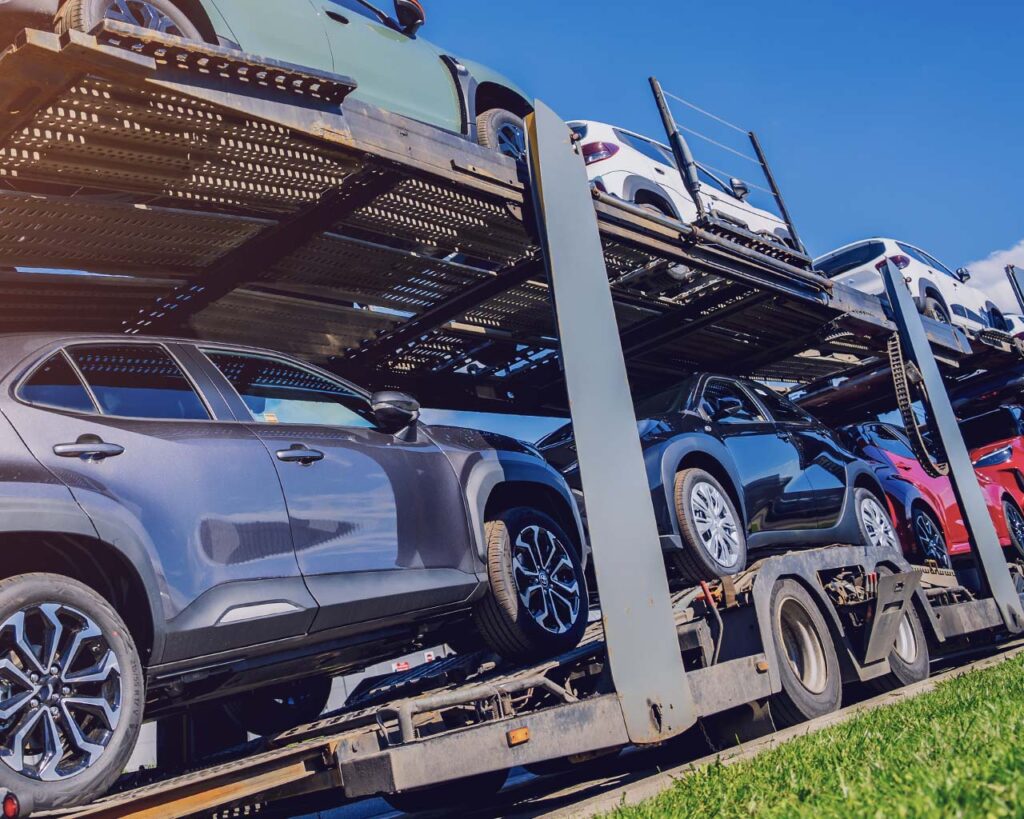
Just about everyone has seen these trucks on the road. They carry about 8-10 cars, are two stories high, and can be as long as 70 feet and designed exclusively for car shipping services. These are known as open auto transport carriers.
The other kind may not be as easy to spot, as they offer privacy and are sealed trucks used for auto shipping. This is known as enclosed auto transport.
Auto shipping cross country is common, and there are over 18,000 trucks on the road doing so. That is another reason why you will see so many auto transport companies.
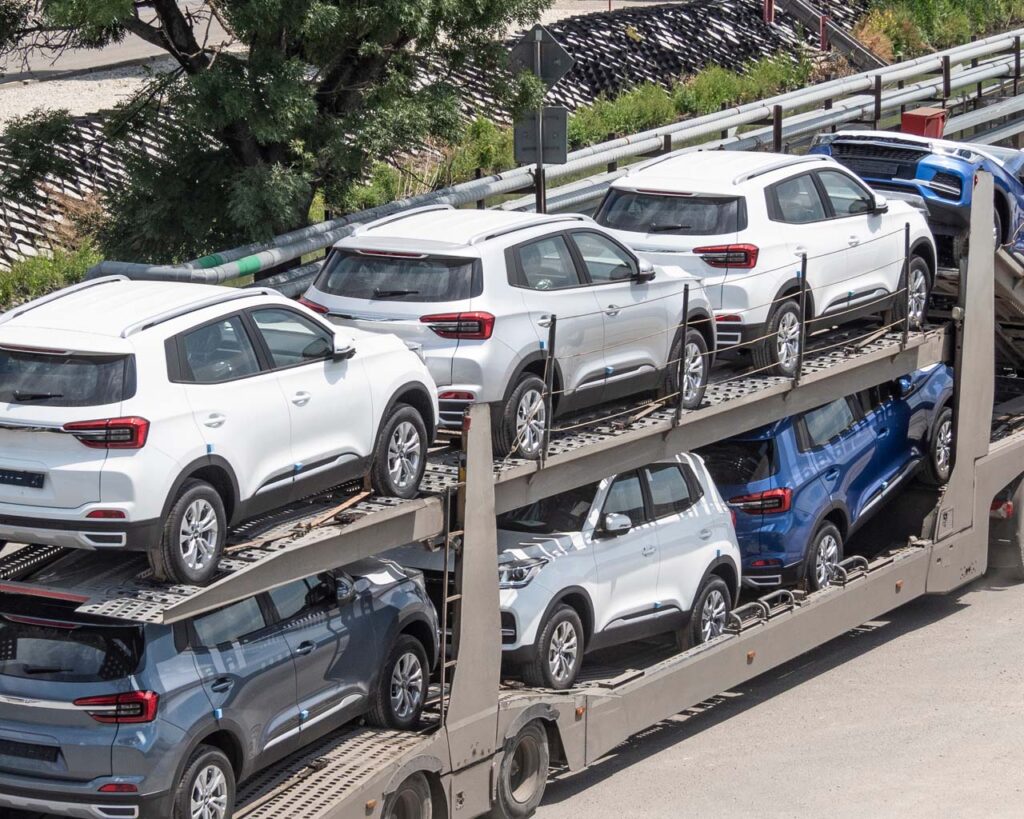
Open carriers are the industry standard for auto shipping, accounting for about 90% of all car shipments. While your car will be exposed to the outside world during transit, it's important to note that the likelihood of damage from these exposures is relatively low.
As of 2023 to car shipping costs to send a car 100-200 miles will be $1.75 per mile. Shipping 200-300 miles will typically be $1.50 per mile. If you take a trip that is over 500 miles, like a state to state transport , you will then look at auto shipping costs of about $0.80 per mile. These numbers reflect open auto transport with door to door shipping for cars that are not inoperable.
Yes, open transport / open car shipping will be the absolutely cheapest way to ship a car cross country. Compared to other methods, it offers the best pricing and flexibility due to the thousands of carriers on the road and their ability to hold 8-10 vehicles.
Open car shipping is significantly cheaper than enclosed. This is because open carriers can haul more cars at once, allowing the cost to be divided among more customers. It is the go-to for cheap car shipping.
Open carriers are more readily available than enclosed carriers. The majority of the carriers on the road are open, meaning you're more likely to get faster service.
Due to the high availability of open carriers, you have more flexibility when scheduling your transport. There's a greater chance of finding a carrier that suits your timetable.
Open carriers are lighter than enclosed carriers, which leads to lower fuel consumption. This makes open transport a more environmentally friendly option and of course cheaper.
One of the primary disadvantages of open car transport although cheap, is that vehicles are exposed to the elements. This includes weather conditions such as rain, snow, and sun, as well as potential road debris.
Since the cars are openly visible, there's a lack of privacy. This is not typically a concern for most people, but for owners of high-value or exotic cars, it might be a consideration.
While major damage is rare, minor dings and scratches from road debris are possible. It's a risk, albeit a small one, that comes with open car carrier.

For those that want extra peace of mind, enclosed carriers offer more additional protection for the vehicles they transport, shielding them from weather elements and road debris. However, these extra benefits come at a cost making it far less cheaper. Usually 40-60% more in cost. So definitely not for the frugal.
Not only do you pay a premium price for safety, enclosed carriers carriers can haul less cars at once, which does not allow the cost to be split among more customers, effectively making this type of vehicle shipping a more expensive option for that reason as well. Like all options, it has its pros and cons.
Enclosed auto transport services protect your car from adverse weather conditions and potential road debris. This is particularly beneficial if your vehicle is being transported over long distances or through areas with harsh weather.
Enclosed trailers offer more security for shipping vehicles than open carriers when used for cross country car transport. They not only protect from potential theft or vandalism but also offer privacy, keeping high-value such as exotic cars, classic cars, vehicles out of sight.
Typically, enclosed transport services also offer more customized, white-glove service as far as the auto transport industry goes. The drivers are often more experienced in handling high-value vehicles compared to an open car carrier, and the cars are strapped down securely to prevent any movement during transit.
Enclosed auto transporters often carry higher insurance limits due to the value of the vehicles they transport. If your car is particularly valuable, this added insurance can provide peace of mind.
The primary disadvantage of enclosed auto transport is the cost. It's typically significantly more expensive than open transport because fewer cars can be transported at once, and it provides a higher level of service. Not for those looking to move a car on the cheap.
Enclosed carriers are less common than open carriers, meaning they may be harder to schedule. There may also be fewer available routes, and it may take more time to arrange transportation.
Enclosed trailers are heavier than open trailers, leading to higher fuel consumption per vehicle. This makes enclosed auto transport less eco-friendly compared to open auto transport.
In the end, the decision between open and enclosed transport depends on your specific needs, budget, desire for cheaper alternatives, and the kind of vehicle you're shipping.
For standard vehicles and for those seeking a cost-effective option, open transport is typically a good choice. However, if you have a luxury, classic, or otherwise valuable car that you want to protect as much as possible, you might opt for the extra protection that enclosed transport provides.
Always weigh the pros and cons, and choose what's right for your situation.
Busy seasonal routes often attract a premium due to high demand, while less popular routes not heaving with traffic can be cheaper due to less customers needing space on a truck. The car shipping industry, much like many others, has its busy and slow periods. The busiest months for auto transporters are typically between May and September.
While this might not always be possible, especially if you're able to ship during times of the year where there's less transport traffic, you can score a much better deal.
When it comes to the timing of your shipment, flexibility is key. Shipping companies are often faced with fluctuating schedules and last-minute changes. By offering them some flexibility in your pickup and delivery dates, you might secure lower costs. If you're not in a hurry to receive your car, you can opt for a longer delivery window, which is generally cheaper. On the flip side, urgent shipping or requesting exact dates often entails additional costs due to the extra logistical challenges involved.
One of the simplest strategies to employ is to Book Early. Just like with flight tickets or hotel bookings, reserving your car shipment well in advance can often help you lock in a better rate. AutoStar Transport Express recommends booking at least a week ahead to secure more affordable rates. Early booking gives the carrier more time to plan their routes efficiently, helping them cut down on their costs, a portion of which they pass on to the customer.
As with any service, it's always a good idea to get multiple car shipping quotes. Prices can vary widely between different shipping companies based on factors like their operational costs, routes, and services offered. Aim to get quotes from multiple providers and compare them to make sure you're getting the best possible deal. While doing this, remember to compare not just the prices but also the services included in each quote. Don't jump on the rate of the first car shipping company you find. Do research.
There are so many car transport companies to choose from. But it's important to not go with the cheapest car shipping company for the service. At least without taking steps to assure the company is a legitimate shipping provider. In most cases if there is one that significantly lower, it could be a sign of a car transport service scam. Fair market shipping price is the goal, and that should be in a $100-150 range.
Don't forget to ask about Discounts. Some car shipping companies offer special rates for different groups of people or circumstances. For example, NX provides discounts for snowbirds (people who migrate from the colder northern parts of North America to warmer southern locales), military personnel, students, and seniors. If you fall into any of these categories.

A drive away auto transport service, also known as a drive away service, is a method of vehicle transportation where a professional driver personally drives your car to its destination. This service is different from other types of auto transport where your car is loaded onto a truck, train, or plane. Instead, your car is driven from point A to point B, much like if you were to drive it yourself. You pay for the driver and gas expenses. It's not as expensive as other transport methods, but it can sometimes not be the cheapest way.
Drive away auto transport, also known as a drive away service, works by employing professional drivers to drive your vehicle from its current location to your desired destination. The process typically begins with you contacting a reputable drive away service and providing details about your vehicle and the transport route. Once the details are confirmed and a contract is signed, a professional driver is assigned to your vehicle. At the scheduled time, the driver will arrive at your location to pick up the car.
They'll perform a detailed inspection to record the car's condition before the journey begins. The driver then drives your vehicle to the predetermined destination, following all necessary road rules and regulations. Upon arrival, another inspection is performed to ensure that the vehicle is in the same condition as before the journey. This is a straightforward and convenient service, but it does add mileage to your vehicle and relies heavily on the professionalism and expertise of the driver.
Convenience: One of the main advantages of a drive away service is the convenience it offers. You don't have to worry about driving the car yourself, especially for long distances, which can be time-consuming and tiring.
door-to-door Service: Typically, the service includes door-to-door delivery, meaning the driver picks up and drops off your car at the locations you specify, eliminating the need for you to get the vehicle to a shipping terminal or pick it up from one.
No Need for Loading and Unloading: Since your car isn't being loaded onto a truck or other transport vehicle, there's less risk of damage from the loading and unloading process.
Wear and Tear: The most obvious downside of using a drive away service is the additional mileage and wear and tear on your car. If you're transporting your car across the country, that can add a substantial amount of miles.
Exposure to Elements: Like with open transport, your car is exposed to the elements and potential road hazards.
Dependent on Driver: The service quality is heavily dependent on the driver. If they're not careful and responsible, your vehicle may be at risk.
Time: While a drive away service can be faster than shipping by truck or train, it's generally slower than air freight. The speed also depends on the route and traffic conditions.
Insurance: Not all drive away services offer comprehensive insurance, so it's essential to check what is covered before you choose this option.
While a drive away service might be suitable for some situations, it's not the right choice for everyone. If your car is a classic, luxury, or particularly valuable model, other methods of transport might be more appropriate to protect your investment. As always, consider your specific needs, budget, and the nature of your vehicle when deciding on the best method of transport.
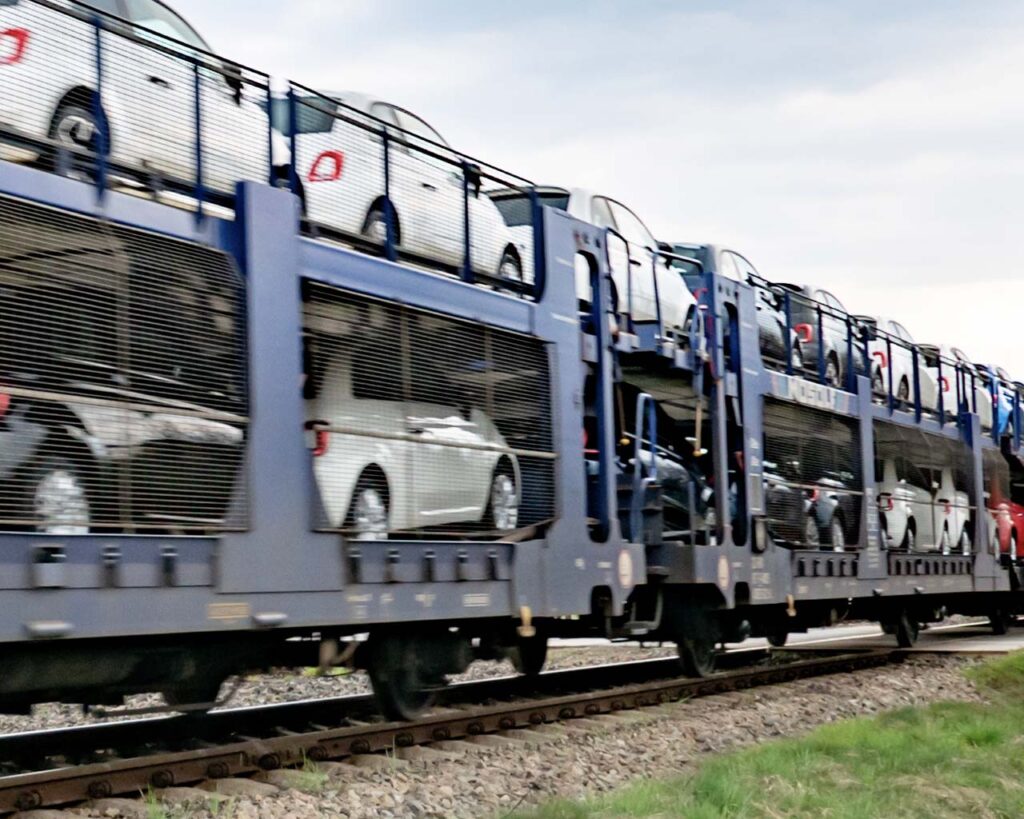
Shipping a car across the country by train is another option that some people may consider. This method involves transporting the vehicle on a rail system rather than by truck. While not as common or readily available as truck transport, it can offer some benefits.
Here's how it works: Your car is loaded onto a train, often along with many others, at a specific rail station. It's then securely fastened to prevent any movement during transit. The train transports the cars to a station near their destination, where they are unloaded for pickup.
Shipping a car by train involves using rail freight services to transport your vehicle. Initially, you'll need to provide details about your vehicle and your desired shipping dates to a train freight company. Once your booking is confirmed, you will typically need to deliver your vehicle to the designated railway station. There, your vehicle is loaded onto a specialized auto carrier train. It is securely fastened to avoid any movement or damage during transit. The train then embarks on its journey to the destination station, transporting the vehicles over the rail network.
Upon reaching the destination, the vehicle is carefully unloaded from the train. You will then need to pick up your vehicle from the destination railway station, or in some cases, the train freight company may offer delivery services to bring the car directly to your location. Shipping a car by train can be an economical and eco-friendly alternative for long-distance vehicle transportation, although it does require careful scheduling and access to suitable train routes.
If you're shipping a car a very long distance (for example, from the east coast to the west coast of the U.S.), train shipping can sometimes be cheaper than shipping by truck. However, this is not always the case, so it's important to get quotes for both methods.
Trains are generally more fuel-efficient than trucks, especially over long distances thereby reducing gas expenses. So if environmental impact is a concern for you, shipping by train could be a more eco-friendly choice.
Since your car will be transported on a train and not driven, it will avoid the wear and tear that would come with driving it a long distance.
Not all locations are accessible by rail, and service might not be available in your specific area. This is particularly true in more rural areas where rail service might not be available.
Shipping by train often requires you to drop off and pick up your vehicle at the train station, which could be inconvenient if it's far from your location. You may also need to arrange for truck transport or another method to get your car to and from the train station.
Trains operate on fixed schedules, which may not align with your preferred timeline. You may also need to book further in advance compared to truck shipping.
While it can sometimes be cheaper to ship by train to ship your car cross country, this is not always the case. Particularly for shorter distances, shipping by truck is often more cost-effective.
As always, the choice between shipping by truck or train will depend on your specific needs, including your budget, timeline, and location. It's a good idea to explore all options and get quotes for each before making a decision.
Car shipping cross country by plane is the fastest, but also by far the most expensive, method of auto transport. It is mentioned here for comparison. This method is generally reserved for extremely valuable cars, such as luxury, exotic, or classic vehicles, or for circumstances where time is of the essence. It's far less common than shipping by truck or train due to the significantly higher cost which is about $2000-4000 domestically and $20,000 and up internationally. Ouch!
To ship your car by plane involves using air freight services for auto transportation. The process starts with choosing a reputable air freight company and providing them with information about your vehicle and the desired shipping dates. Once the booking is confirmed, your vehicle is typically picked up from your location, or you can deliver it to the airport yourself. Upon arrival at the airport, your car is secured and loaded into a cargo plane using special equipment to prevent movement during the flight.
The vehicle is then flown to the destination airport where it is unloaded with the same care. After arrival, it undergoes an inspection to ensure no damage occurred during transit. Finally, the vehicle is either picked up by the owner at the destination airport or delivered directly to the final location by the freight service. Shipping a car by plane is the fastest, but also the most expensive method of auto transport, often reserved for high-value or luxury vehicles, or when time is a critical factor.
If time is a critical factor, shipping a car by air is the fastest method available. This can be particularly useful if you're moving a significant distance in a short period of time, or if the car is needed for a specific event or occasion.
Cars shipped by air are exposed to fewer risks than those transported by other methods. They're not subject to road hazards, and the overall handling is minimal, reducing the risk of damage.
Many air freight services offer door-to-door delivery, making it a highly convenient option. They take care of the entire process, from picking up your vehicle at your current location to delivering it to your new destination.
Shipping a car by air is substantially more expensive than other methods of transport. It can cost several times the price of shipping by truck or train.
Air transport for cars is not as widely available as other methods. There are fewer service providers in this space, and scheduling can be less flexible due to the logistics involved in air transportation.
You will likely need to travel to the nearest major cities where airports are normally situated.
Air transport has a much larger carbon footprint than other methods of transportation, making it a less environmentally friendly option.
Shipping a car by plane is a specialized service that's typically used for high-value vehicles or in situations where speed is paramount. It's essential to research and get quotes from several air freight companies, verify their credentials, and read reviews to ensure you're choosing a reliable service if you decide to ship your car by air.
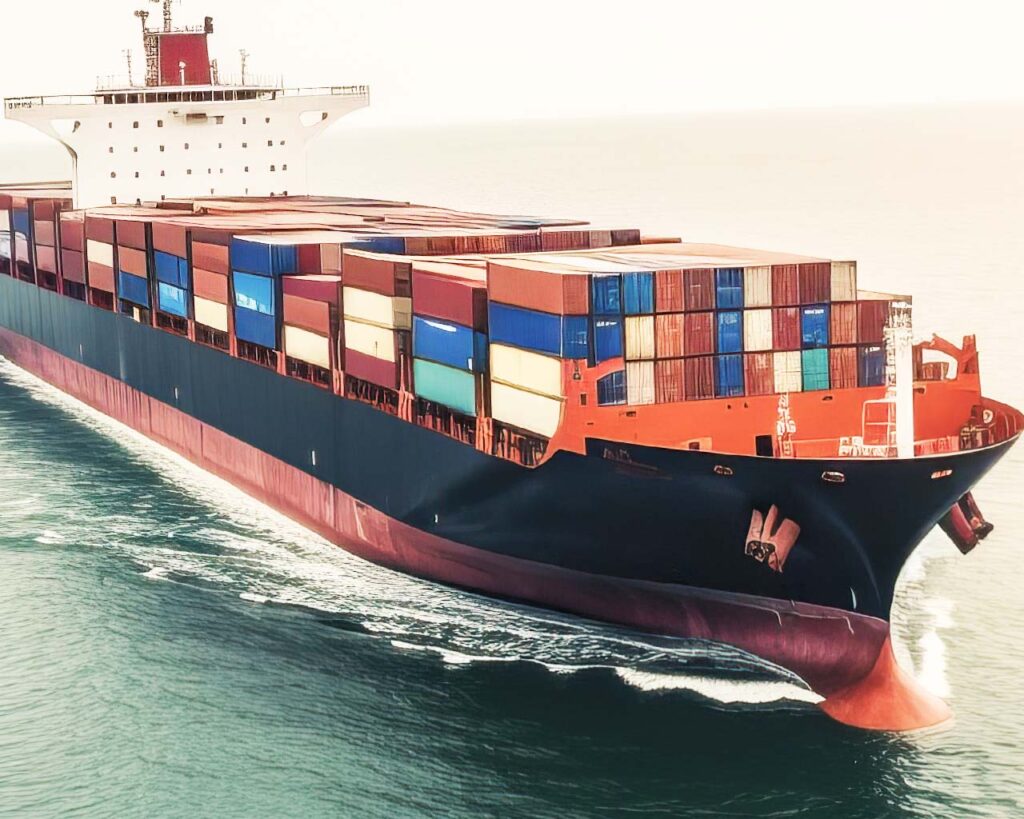
Shipping a car via a ship is a common method for overseas or long-distance auto transport. Several options are available, each with its own advantages and disadvantages, including Roll-on/Roll-off (RoRo) shipping, container shipping, and exclusive container shipping.
Auto transport via ship is a method typically used for international or long-distance vehicle transportation. The process begins with you booking the service with a shipping company, providing details about your vehicle, and choosing a shipping method such as Roll-on/Roll-off (RoRo), container shipping, or exclusive container shipping.
Once the booking is confirmed, you'll need to deliver your vehicle to the port, or the shipping company may offer to pick it up. For RoRo, your car is driven directly onto the ship and secured on the deck. For container shipping, your vehicle is loaded into a large container, then hoisted onto the ship.
The ship then travels to the destination port, where your vehicle is unloaded and inspected for any potential damage. Once it clears customs and any necessary inspections, you can pick it up from the port, or arrange for it to be delivered to your desired location. Transporting a car by ship is a cost-effective way to move vehicles across great distances or between countries, but it can be a complex process requiring careful coordination and handling.
RoRo is a type of shipping where vehicles are driven onto the ship and secured on the cargo deck. They're then driven off again at the destination port. It's a highly efficient method often used for new car transportation.
RoRo shipping tends to be the most economical way to ship a car overseas because it uses space efficiently and doesn't require extensive loading and unloading procedures.
The process is straightforward as the cars are driven on and off the vessel, without needing to be loaded into a container.
RoRo services are widely available and cover numerous routes worldwide, making it an accessible choice for many.
Vehicles shipped using the RoRo method are exposed to the elements IF while on the ship's deck. (many have garage style parking)
Limited Protection: Cars are more vulnerable to potential damage during transit due to their exposure.
Container shipping involves packing the car into a large shipping container, which is then loaded onto the ship. The car is securely fastened within the container to prevent movement during transit.
The car is protected from the elements and potential handling damage since it's enclosed in a container.
You can also transport personal belongings in the same container with your car, which can be an advantage if you're moving overseas.
It's generally more expensive than RoRo due to the additional handling and the cost of the container.
Loading and unloading the car from the container requires more time and planning.
Exclusive container shipping is a variation of standard container shipping where your car is the only one in the container. This is different from standard container shipping, where multiple vehicles are often packed into the same container.
It provides the highest level of protection, as the car has the entire container to itself, minimizing the risk of damage from other vehicles.
With exclusive container shipping, you have more flexibility with your shipment and can often choose when your car is shipped rather than waiting for a container to be filled.
This is the most expensive option because you're paying for the whole container yourself.
For international shipping, transport via ship is often the most economical choice.
It's a practical method for transporting cars over long distances, particularly for international moves.
Transport by ship is slower than air freight. It can take weeks, depending on the distance and route.
Shipping a car by sea involves dealing with ports, customs, and other logistics, which can be complicated.
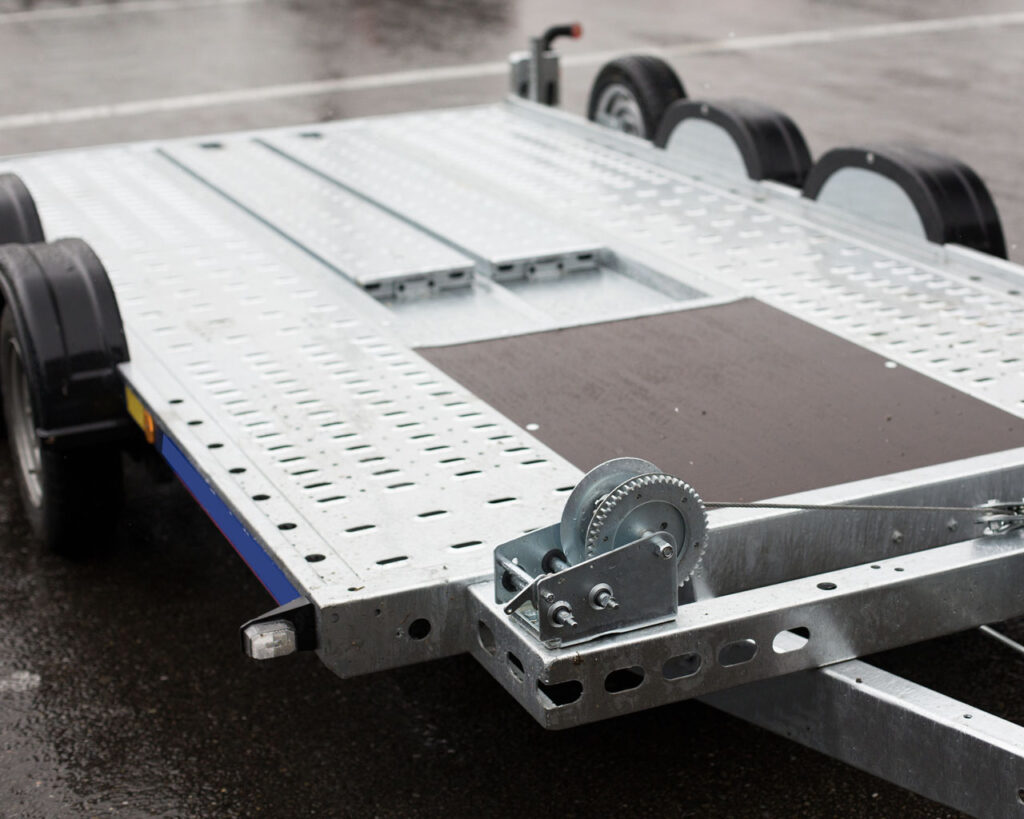
Using a tow dolly or trailer to transport your own vehicle entails hitching your car to a tow vehicle and personally driving it to your chosen location. This approach provides cost benefits, flexibility, and enhanced security. Nonetheless, it necessitates the use of an appropriate tow vehicle, may only be feasible for certain types of cars, and shifts the entire burden of the transport process onto your shoulders.
Advantages:
Disadvantages:

A family member or good friend can drive your car across the country.
Advantages:
Disadvantages:
If you are traveling only a short distance, driving your car is always less expensive than shipping it if your route is less than 400-500 miles. Looking at in the prospective of time and money, you can cover a 400 mile drop miles in around 6 hours. Your fuel and food expenses will be minimal, and you won't have to pay for lodging because you get there the same day. Start by getting an instant quote to see where you stand.
That changes however if you are trying to move multiple vehicles or an inoperable (non running) vehicle or if you need to add a food and hotel budget for a longer trip.
You may not be sure if picking from car shipping companies to get your car home. There's an easy seven question checklist you can go by to determine if driving will be the cheaper of the two options or if you will pay extra (or rather pay) to have it shipped:
Yes, as mentioned before we do take inoperable vehicles and salvage vehicles. It doesn't matter what the condition it is as long as they either roll and steer without anything holding the wheels from moving or there is loading / unloading assistance with either a fork lift or tow truck on site at each end. Carriers do not drag cars on to their trailers or carry boom / crane or forklift. You still benefit from door to door service.
You can absolutely hire a car shipping carrier directly. Finding an open carrier directly can be the cheapest car shipping option. Unfortunately it does take a lot of time, research, and patience. This can be for shipping a car cross country as well as state to state. Not only that, in searching online you will always run into brokers because the most popular shipping sites will be broker sites.
In fact, car carriers won't have even a website or a phone number listed anywhere. They do not want to deal with the sales portion of the business but just the car shipping portion because they simply don't have to. With a broker, the work has been done for them and they have a vehicle that is sitting on a marketplace like Central Dispatch for which they can take the vehicle with just a click.
We also will say that a carrier can also not be cheaper directly because of situations with brokers. In some cases, carriers will try to make more money because the customer believes they are paying for something superior. That is a concept to keep in mind!.
In conclusion, the cheapest shipping method depends on your specific needs, including your budget, timeline, and the level of protection you want for your vehicle. Always ensure to check with the shipping company about insurance coverage, and verify their credentials and reviews to ensure a smooth shipping process.
Carl brings over a decade of proven expertise in the auto shipping industry, with hands-on experience in nearly every aspect of the business since 2014. From dispatching and sales to customer service and operations, he has built a 360° understanding of how vehicle transport truly works.
As the driving force behind NX Automotive Transport’s website, Carl is both the author and strategist behind the educational content and guides that thousands of customers rely on to make informed shipping decisions. His mission is to raise the standard of honesty and transparency in auto transport, not only by leading NX’s content and customer education, but also by mentoring and training others in the industry.
Carl’s unmatched depth of knowledge, combined with his dedication to fair and straightforward practices, makes him one of the most trusted voices in auto transport today.
There isn't insider pricing or special deals others get that we cannot.
We believe in giving jobs to our community. All sales staff is here in the USA.